How Long Can You Drive With Low Tire Pressure Before It’s Dangerous?
You’re running late for work when you notice the TPMS low-pressure light pop up on your vehicle’s dash. With a quick glance, it becomes apparent that none of your vehicle’s tires are completely flat.
Could you make it to the tire shop after work or should you deal with this ASAP?
Driving on underinflated tires can be dangerous, but for many of us, it can feel unavoidable when we have someplace to be. So how long do you actually have before low tire pressure becomes a safety hazard?
We’ll answer this and other common questions regarding low tire pressure.
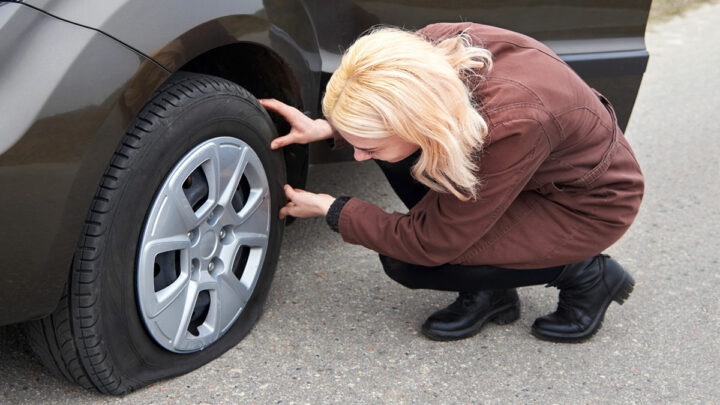
Related: Why Is My Low Tire Pressure Light On But Tires Are Fine?
What Is Considered Low Tire Pressure?
You should consider the pressure of a tire to be “low” whenever the tire’s PSI is 3 pounds or more below that which is specified by the affected vehicle’s manufacturer.
The greater the difference between a tire’s actual pressure, and the pressure specified by the vehicle’s manufacturer, the more dire the situation at hand.
Dangers of Low Tire Pressure
It’s best to avoid driving on under-inflated tires, no matter the circumstances. In most cases, a punctured tire can be repaired, if caught before being driven on.
However, tires are quickly damaged beyond repair when driven on while under-inflated. When this occurs, you’re left with no choice but to replace the tire in question.
When an under-inflated tire is driven on, it begins to break down internally. Various substructures of the affected tire degrade severely. Once compromised, the affected tire becomes unsafe to drive on and should be discarded immediately.
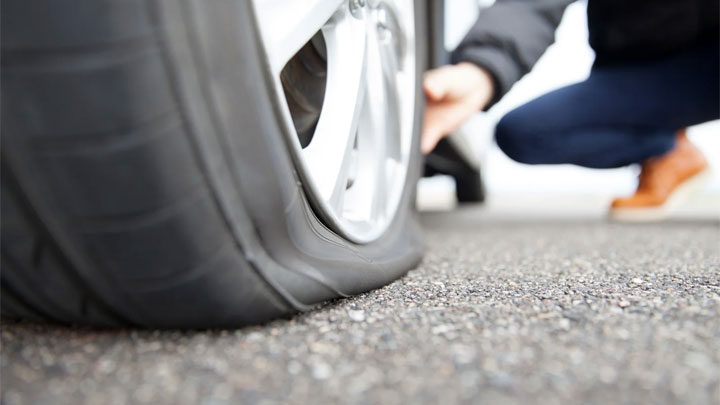
With the price of a new tire approaching $200 these days, there should be plenty of motivation to get a leaking tire fixed right away.
In almost every case, the shop that you purchased the tire from will fix a flat tire for free. A few shops, like Discount Tire, will repair a tire for free even if you purchased the tires elsewhere.
What’s the Worst That Could Happen?
Attempting to drive on an under-inflated tire for prolonged periods is never a good idea, and is often accompanied by dire consequences, in terms of safety.
The structural integrity of a tire is quickly compromised, when operated in an under-inflated fashion, thereby posing undue risk of a blowout. Such sudden tire failure, especially at highway speeds, can present a significant loss in vehicle control.
You will also be at substantial risk of becoming stranded along the side of the road, if you choose to push the limits of your tire’s capabilities, in terms of under-inflated operability. This situation poses hazards of its own, as you’ll be forced to change your vehicle’s tire roadside, while exposed to other traffic.
Acceptable vs Critical Low Pressure
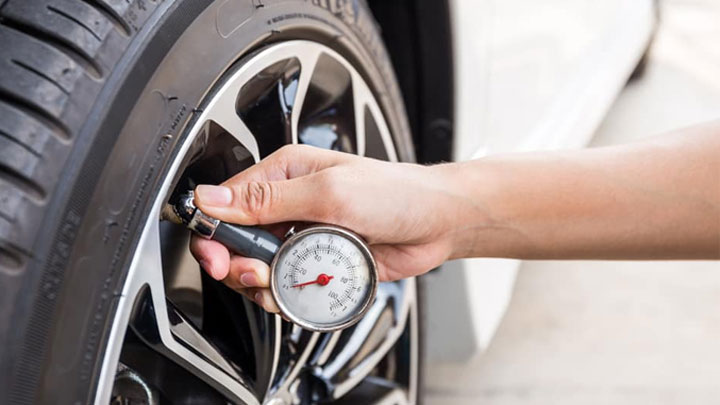
While a severely under-inflated tire is of significant concern, you don’t need not be overly alarmed by a tire that is only 2-3 pounds low in overall pressure.
A tire that is no less than 10 percent low, in comparison to the suggested pressure specified by the affected vehicle’s manufacturer, typically falls within the “acceptable” range. This simply means that the tire in question should be inflated to its specified PSI, and monitored closely going forward.
While there is some degree of middle ground worth consideration, any tire that exceeds this 10-percent differential in pressure by significant margins should be considered “critical” in terms of underinflation. This means that prolonged operation in this manner poses a significant risk of premature tire failure and irregular tread wear.
See Also: What Does Driving On a Flat Tire Feel Like?
How Long Can You Drive With Low Tire Pressure?
The time in which you can drive on an under-inflated tire is directly related to the level of underinflation that you are dealing with. As such, you could easily categorize these levels of underinflation, as well as the lengths of time in which a tire could theoretically be driven in each case.
These categories are as follows:
Minor Underinflation (1-5 PSI Low)
A tire that is minorly under-inflated can theoretically be driven on for weeks, or even months, if no additional air is lost. However, continuing to drive with a tire in this condition will almost certainly lead to irregular tire wear, and/or premature structural failure.
Moderate Underinflation (6-12 PSI Low)
A tire that is operated in a moderately under-inflated state will quickly begin to exhibit irregular treadwear, and risks a much higher instance of sidewall, belt, and ply failure.
Simply put, noticeable damage of an irreparable type will likely occur in just a few weeks to a couple of months, with the tire itself likely incurring overall failure within 6-months.
Major Underinflation (12+ PSI Low)
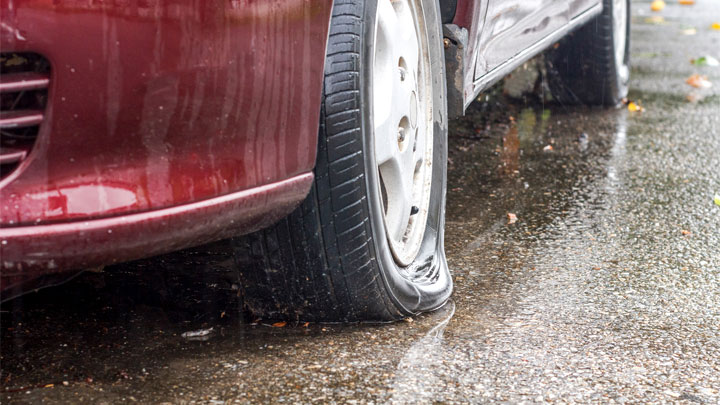
Breakdown of a tire operated in a severely under-inflated fashion almost always occurs rapidly. Tread irregularities become evident in as little as 1-2 weeks, and sidewall structural failure can occur nearly as fast.
In the most severe of cases, when a tire has little or no air remaining, complete failure can occur in as little as a couple of miles of driving.
Factors That Impact the Time Frame
There are several factors at play, when attempting to determine the amount of time in which a tire can be driven on at less than optimal pressures. Some of the most critical of these factors are as follows.
Speed
The faster the speeds at which a tire is operated, the quicker it will begin to build up heat. This heat imparts additional stress upon a tire’s critical sub-structures.
Therefore, a tire will degrade much more rapidly when operated at high speeds than, moderate speeds, when under-inflated.
Load Weight
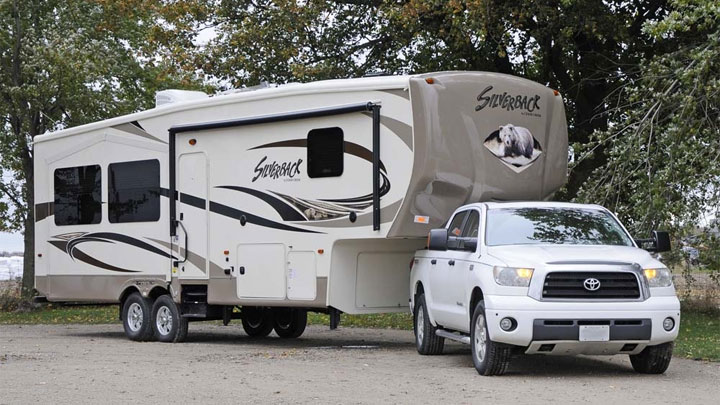
Operating tires under heavier than specified loads can also generate considerable heat. While you should always make it a point to avoid operating a vehicle’s tires under heavier loads than that for which they were designed, this principle is evermore important when a vehicle’s tire/tires are under-inflated to any degree.
But even if your load weight is under the maximum specified threshold, the lighter the vehicle (passengers and cargo), the slower the tire degradation will occur with underinflated tires.
Tire Condition
Tires that have already degraded to any noteworthy degree are especially prone to failure when operated in under-inflated fashion for lengthy periods of time. This is especially true of tires that are exhibiting any signs of dry rot or tread separation.
Structural defects such as shifted or broken belts are also cause for increased concern.
What To Do Once You Realize You Have Low Tire Pressure

Once you realize that you have low air pressure in one or more tires, you should take action immediately. This, first, begins with checking the exact pressure of the tire/tires in question. This can be done with a manual tire gauge, or alternatively, can be checked via a digital in-dash menu on many newer vehicles.
If the affected tire is more than 10 PSI of air low, in relation to that specified by a vehicle’s door-jamb tire pressure placard, then no vehicle movement should take place. Instead, the affected tire should be inflated to its correct pressure or exchanged for the vehicle’s spare tire.
Inflating your tires up to the correct pressure can be done at home via any air compressor or tire inflator, at a gas station’s air pump, or at any auto tire or repair shop. Even Costco has a tire refill station and they even use Nitrogen to fill tires, which may have additional benefits.
How to Be Better Prepared Next Time
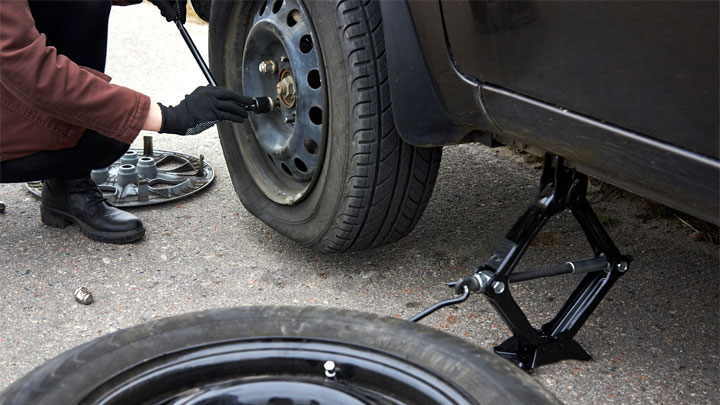
The occasional low tire is an inevitable part of vehicle ownership. This being said, your ability to overcome such hardship often comes down to a matter of preparedness. This involves having an adequately inflated spare tire on-hand, while also being equipped with a functional jack and lug wrench to remove lug nuts/bolts and facilitate installation.
It is also helpful to have a portable tire inflator at the ready. Such devices come in many different configurations, including those that are battery-powered in nature, as well as those hard-wired to allow 110v operation.
Additionally, one should also ideally never hit the road without an accurate and tested tire pressure gauge at the ready as well. Such gauges can be easily stowed in a vehicle’s glove compartment and can be a true life-saver in many situations.
- P0480 Code (Symptoms, Causes, and How to Fix) - Apr 19, 2024
- Car Temperature Gauge Stopped Working? (Here’s Why) - Apr 15, 2024
- Ignition Coil vs Coil Pack (What’s the Difference?) - Apr 8, 2024
